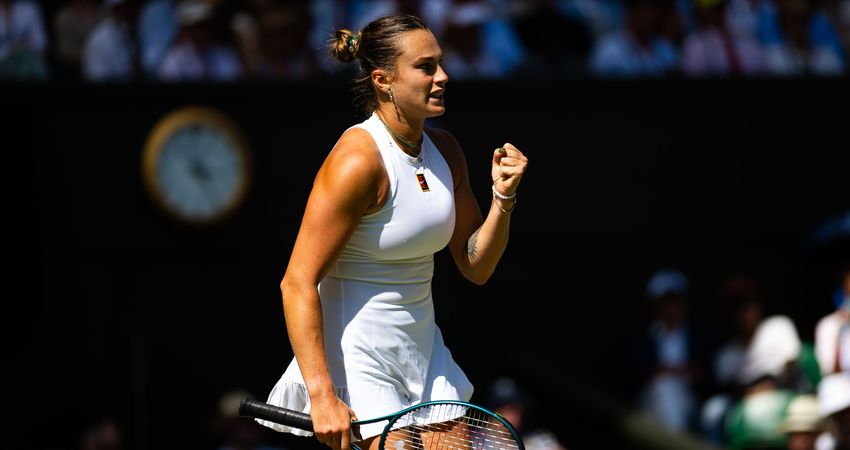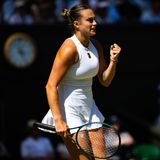Belief, experience and tiebreak brilliance lead Sabalenka back to Riyadh

WIMBLEDON -- After a dozen games -- a 6-6 dead heat -- tiebreaks, by design, un-tie things. They are the high-stakes pivotal sequence, the ultimate endgame when the money is made.
As we speak, Aryna Sabalenka has won 14 consecutive tiebreaks, and if that sounds like a lot -- it is. The odds of a player doing that are 16,384 to one, or .00610351562 percent. It has only happened once previously in the more than half-century of Open era play; Sloane Stephens did it between 2015 Roland Garros and 2016 Wimbledon.
“I think just because I’m not thinking about these stats during the match helps me to stay focused from the very beginning until the very end of the tiebreak,” Sabalenka said of her tiebreak mentality. “Because tiebreak is a tricky game. Everything can just go one way or another.
“You just got to be focused on each point and be aggressive.”
Those last 12 words are Sabalenka’s mantra, her deceptively simple strategy for success. That aggressive focus is a leading reason it was announced on Tuesday that she’s the first player to qualify for the 2025 WTA Finals Riyadh presented by PIF, taking place four months from now.
Sabalenka, who leads all women with 47 match-wins this year, has collected 6,615 points in the PIF Race to the WTA Finals, more than 2,000 ahead of her closest pursuer.
Since regaining the World No. 1 ranking last fall, Sabalenka has held it for 37 consecutive weeks. Overall, she's had it for 45 weeks, more than the individual career totals of Angelique Kerber, Naomi Osaka, Maria Sharapova, Kim Clijsters and Venus Williams.
Sabalenka has worn it well, embracing nearly everything that goes with the No. 1 ranking. Following her remarkable success in tiebreaks, Sabalenka has made it a habit to seize the moment.
She’s playing her third consecutive Grand Slam event as the World No. 1 -- and she is trying to become only the third woman this century to reach the singles final of a calendar year's first three majors, following Justine Henin (2006) and Serena Williams (2015 and 2016).
On Tuesday, Sabalenka came back to defeat Laura Siegemund 4-6, 6-2, 6-4 to advance to the semifinals. She’s the first player to reach the final four here in three consecutive appearances since Serena Williams did it four times in 2015, 2016, 2018 and 2019.
Sabalenka has now made 10 Grand Slam semifinals in a span of 11 appearances, joining Williams as the second player this century to do that.
Earlier in the fortnight, when Sabalenka played on Centre Court against Great Britain’s Emma Raducanu in the third round, the top seed demonstrated the poise that has propelled her to the top.
Down 4-2 in the first set and 4-1 in the second, there were a few flashes from her younger days -- slumped shoulders and animated conversations with herself. And yet, Sabalenka, summoning her devout belief, came back to win 7-6 (6), 6-4.
“Maybe earlier in my career I would just lose it and I would just go crazy and lose that [second] set 7-5,” she told reporters later. “But with the years, with the experience, I learned that this is not it.
“I think experience solved a lot of problems.”
That experience, and her spirit of carpe diem, will carry her all the way to Riyadh, where she’ll be making her fifth consecutive appearance at the prestigious season-ending tournament.




